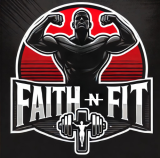Understand the V Shred diet’s structure, claims, and actual effectiveness—so you can decide today if it fits your fat loss or muscle-building goals. The V Shred diet has taken over social media, with flashy ads, “shredded in weeks” promises, and transformation photos that stop your scroll. But is it legit? More importantly, is it right for your body, your metabolism, and your goals?
Let’s break down what the V Shred diet actually is, what it offers, and whether the science supports its claims.
What Is the V Shred Diet?
The V Shred diet is part of a paid fitness program created by Vince Sant, a fitness model and entrepreneur. The brand’s core pitch: customized diet and workout plans based on your body type (ectomorph, mesomorph, endomorph).
The diet focuses on:
- Rapid fat loss through calorie restriction
- Body type–specific macro splits
- A combo of HIIT and resistance training
- Use of supplements from their store
🎯 Key selling point: It claims to personalize nutrition and training for your exact metabolism and genetic body type.
What the V Shred Diet Promises
- Fast weight loss (10–20 lbs in weeks)
- Visible abs in 30 days
- Customized “body type” nutrition
- Simpler meals with less tracking
- Fat-burning supplement boosts
🧠 Marketing hook: It suggests that your body type is the missing link to results—and that mainstream plans don’t work for everyone.
The Science Behind It: Fact or Fiction?
❌ 1. Body Type Dieting Is Outdated
The idea of training and eating for your body type (endomorph, ectomorph, mesomorph) is not supported by modern research. Calorie balance, protein intake, and exercise matter far more than your “type.”
✅ 2. Calorie Deficit Works
Most V Shred meal plans reduce calories by 15–30%, which creates a deficit leading to fat loss. That’s the real reason it works—not some custom metabolic secret.
📊 Math check:
Maintenance = 2,500 kcal
V Shred plan = 1,900 kcal
→ Deficit = ~600 kcal/day
→ Estimated fat loss = ~1.2 lbs/week
✅ 3. High Protein = Muscle Retention
The plans often provide 0.8–1.0g protein per pound of body weight—a smart approach to preserving lean mass during weight loss.
Pros of the V Shred Diet
✔️ Simple and Structured
If you’re a beginner who struggles with planning, the structure helps create consistency. Most people lose weight simply by sticking to a plan.
✔️ Focus on Movement
It includes HIIT cardio and weight training, which increases total calorie burn and improves insulin sensitivity.
✔️ Meal Prep–Friendly
The meals are basic and repeatable—chicken, broccoli, rice-type plans that help reduce decision fatigue.
Cons of the V Shred Diet
❌ 1. Overhyped “Body Type” Claims
Your fat loss is determined by your energy balance, not your bone structure. While V Shred offers a simple way to eat fewer calories, the “body type” logic is mostly pseudoscience.
❌ 2. Aggressive Supplement Push
Much of the program revolves around buying branded fat burners and pre-workouts. These are not essential for fat loss and are often overpriced.
❌ 3. No Long-Term Habits
It teaches you how to follow a plan—not how to adjust it, handle social events, or eat intuitively over time. That leads to rebound for many users.
Should You Follow the V Shred Diet?
✅ Follow it if:
- You’re a beginner who needs structure
- You want fast results and are okay with a rigid plan
- You enjoy workouts that combine cardio and lifting
🚫 Skip it if:
- You’ve already tried rigid plans that didn’t last
- You prefer flexible dieting or intuitive eating
- You want a plan based on scientific nutrition principles, not marketing angles
💬 Smarter option: Use the math behind V Shred (calorie deficit, protein, consistency), but customize your own plan around whole foods and habits that last.
Key Takeaway
The V Shred diet works because it creates a calorie deficit—not because of your body type.
It’s a flashy, structured plan that can deliver short-term results for beginners. But for long-term success, you’re better off using the same science (deficit, protein, resistance training) with a more flexible and habit-driven approach.
Start by calculating your maintenance calories, reducing intake by 15%, hitting 0.8g protein per pound, and lifting 3–4x a week. You’ll get the same results—minus the hype.
Subscribe now and get a 14-day free trial workout app for iPhone users.


